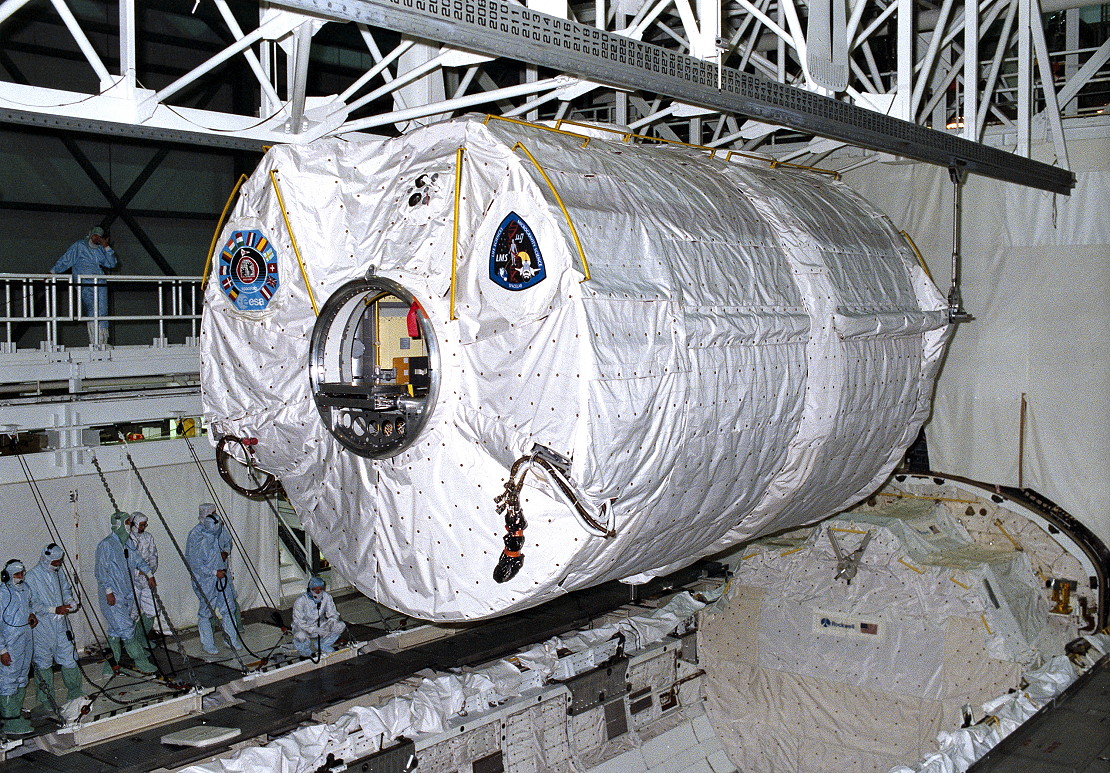
Two decades ago, this week, International Space Station (ISS) research began in earnest, even though it would still be two more years before its first structural components actually reached orbit and over four years before the first long-duration crew arrived aboard the multi-national orbiting outpost. For in June 1996, the record-setting mission of STS-78—whose seven-strong crew included two future ISS residents and a future EVA assemblyman—conducted a multitude of life and microgravity science investigations which virtually mirrored the kind of research which is today commonplace aboard the space station. In the words of Mission Manager Marc Boudreaux of NASA’s Marshall Space Flight Center (MSFC) in Huntsville, Ala., the $138 million Life and Microgravity Spacelab (LMS) mission carried “the key ingredients to take us into the next era of space exploration.”
One such ingredient was the short timeframe between the initial decision to fly LMS and its actual realization. Historically, Spacelab missions required up to four years to prepare from concept to launch, but in the wake of the second International Microgravity Laboratory (IML-2) flight in July 1994, it was recognized that a lengthy gap would exist before the first research possibilities opened up aboard the ISS. With this in mind, in December 1994, NASA announced that it would stage a one-off Spacelab mission, lasting 16 days, in mid-1996. Housed inside the bus-sized Spacelab module, aboard the shuttle’s payload bay, LMS would comprise 15 life science and seven microgravity science investigations, with Principal Investigators (PIs) spanning the globe, from the United States to Switzerland, from Italy to Japan, and from Sweden and Canada.
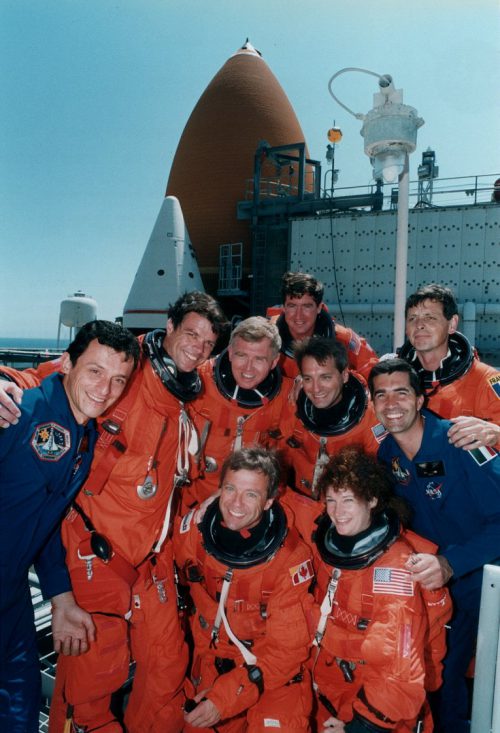
Several months later, in May 1995, veteran astronaut Susan Helms was named as “Payload Commander” for the mission, with oversight of the LMS research objectives. She was joined by Mission Specialists Rick Linnehan—the first qualified veterinarian selected as a member of NASA’s Astronaut Office—and physician Chuck Brady, together with a “pool” of four Payload Specialists, of whom two would fly on STS-78. The PS candidates were Canadian physician Bob Thirsk, French physicist and metallurgist Jean-Jacques Favier, Italian physician Luca Urbani, and Spanish aeronautical engineer Pedro Duque. Favier and Thirsk would serve as prime PS, with Urbani and Duque as backups. In time, Helms and Thirsk would both embark on multi-month ISS expeditions, whilst Duque completed a short research mission to the station and Linnehan conducted three EVAs to install the orbiting lab’s first Japanese pressurized module and the Dextre robotic “hand.” Later that year, veteran astronauts Tom Henricks and Kevin Kregel rounded out the STS-78 as Commander and Pilot. Having previously served together on STS-70, Henricks and Kregel became the first of only two Commander-Pilot pairings to have flown together on two separate missions in the entire 30-year Space Shuttle Program.
Training for STS-78 posed many surprises for the first-timers. “That first mission, you want to do so well,” Linnehan explained later. “You want to perform and you’re really hyped-up. You don’t have time to enjoy yourself at all, until you’re finally up in space and you realize: Man, I’m here!”
The mission was truly “international” in flavor, offering another ingredient in preparing for the ISS, and many of its payloads were carried over from IML-2 and the second Spacelab Life Sciences (SLS-2) flights. Principal investigators for the experiments were based at four institutions in Europe and four in the United States, and a broad use of telescience would be employed to effect control from the ground. Already, the United States Microgravity Payload had demonstrated the ability of scientists to monitor their experiments remotely and on LMS they would do the same with research facilities inside the pressurized Spacelab module.
However, unlike many earlier flights—but similar to the Spacelab Life Sciences (SLS) missions—the STS-78 crew would operate a single-shift system. The benefit of this approach was that life science experiments required a significant amount of crew time and video coverage, but only minimal power and energy, could be executed when all seven astronauts were available as test subjects and operators. The automated and remotely controlled materials science investigations, on the other hand, could then be run via telescience as the crew slept. Full telecommand and video facilities would still be available, but at the same time the absence of movement from the astronauts would not disturb the highly sensitive microgravity investigations.
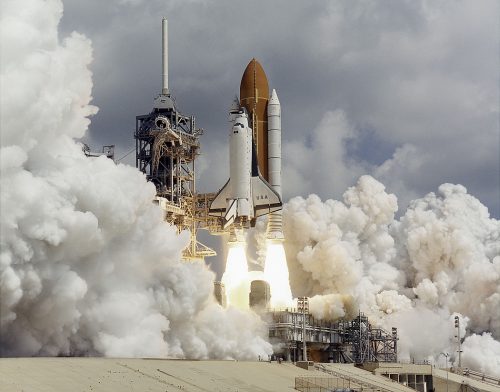
In May 1995, around the same time that the first portion of the STS-78 crew was announced, technicians in the Operations & Checkout (O&C) Building at the Kennedy Space Center (KSC) in Florida began integrating the LMS hardware into the Spacelab module. By the following April, the fully-laden facility was closed out and loaded aboard Columbia. And at 9:49 a.m. EDT on 20 June 1996, STS-78 roared into orbit for what was expected to be one of the longest shuttle flights in history. Officially baselined to run for just under 16 days, NASA’s press kit offered 15 days and 22 hours as the mission duration, based on an on-time launch and landing. This would enter second place, after the 16.5-day STS-67 flight by shuttle Endeavour a year earlier in March 1995 and would pip Columbia’s previous “personal best” on STS-73 by a matter of minutes. However, it was hoped that shrewd conservation of electrical power reserves might enable the STS-78 crew to remain aloft for 24 additional hours, pushing their flight to almost 17 days in length.
Commander Tom Henricks provided television viewers with a unique perspective of his fourth launch into orbit, thanks to the presence of a small video camera mounted in the forward flight deck. Its footage began just prior to the thunderous ignition of Columbia’s three Space Shuttle Main Engines (SSMEs) and twin Solid Rocket Boosters (SRBs) and proceeded through to the separation of their External Tank (ET) and the establishment of the vehicle into a preliminary orbit.
The launch itself was certainly a bone-jarring affair, although a subsequent analysis of the recovered SRBs revealed worrying damage to their field joints, caused by hot gases. It was through such “blow-by” of one of the booster seals that Challenger had been lost in January 1986. Although the STS-78 ascent did not compromise the astronauts’ safety, it marked the first occasion that the Redesigned Solid Rocket Motor (RSRM) joints had experienced “combustion product penetration.” NASA managers pointed out that there was a hot gas “path” through the motor’s field joint, but not through the “capture” joint. Consequently, the boosters performed within their design requirements. Nevertheless, the incident did raise questions over a new adhesive and cleaning fluid which had recently been added to the SRBs to comply with Environmental Protection Agency (EPA) regulations. Aside from the SRB issue, which did not come to light until the end of June, during their disassembly and inspection, Columbia’s ascent was nominal.
Once inserted into a 39-degree-inclined orbit, the crew set to work transforming their launch vehicle into a home and laboratory for the next 16 days. “Today was the busiest first shift of activities we’ve ever had for Spacelab,” explained LMS Mission Scientist Dr. Patton Downey of MSFC on the evening of 20 June. “Virtually every experiment on board either had its equipment activated or checked out.” From their stations on the flight deck, Henricks and Kregel oriented the shuttle into a “gravity gradient” attitude, with her tail pointing Earthward, so that very few thruster firings were required to avoid disrupting the sensitive microgravity experiments.
In spite of his training, Rick Linnehan—seated alongside Susan Helms on the flight deck for ascent—was astounded by the view of Earth through Columbia’s overhead windows. “My first job was to take pictures of the External Tank as it separated with a huge camera lens,” he remembered, “and I had to wedge myself in the window and take these pictures. As you looked down, there’s the tail of the orbiter and just the Earth and the oceans. Everybody was around the aft windows … and no one said anything. There was nothing to say.”
The second part of this article will appear tomorrow.
Want to keep up-to-date with all things space? Be sure to “Like” AmericaSpace on Facebook and follow us on Twitter: @AmericaSpace




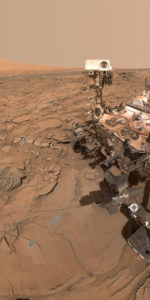
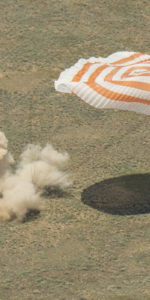
2 Comments
2 Pings & Trackbacks
Pingback:‘Short-Lived Record’: 20 Years Since the Record-Setting Mission of STS-78 (Part 2) « AmericaSpace
Pingback:Changing the Guard: 20 Years Since STS-79 (Part 1) « AmericaSpace